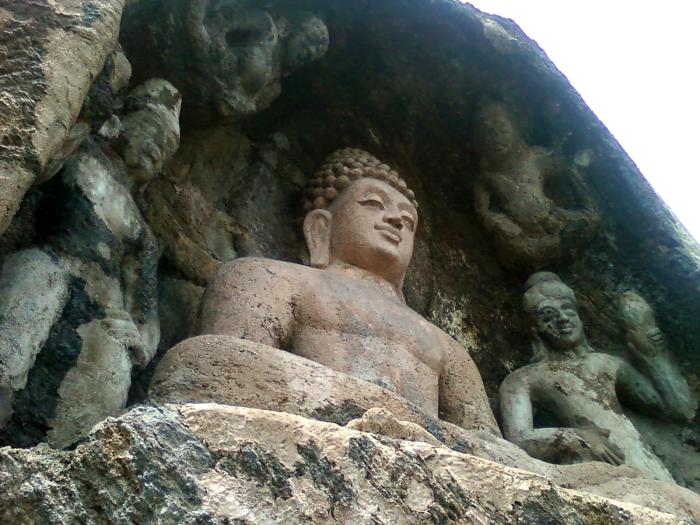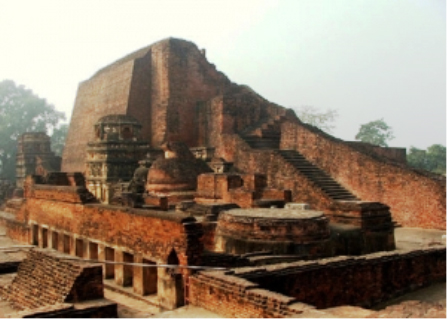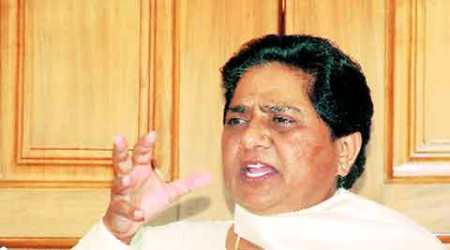9915 WED LESSON 1621- Tipiṭaka- from Online FREE Tipiṭaka Research & Practice University (OFTRPU) through
Converted all the 92 Languages as CLASSICAL LANGUAGES
conducts lessons for the entire society and requesting every one to
THIS IS AN EXERCISE FOR ALL THE ONLINE VISITING STUDENTS FOR THEIR PRACTICE
had a golden chance of witnessing Koffee with Satya show at ADA
Rangamandira. The Differently Enabled children gave one of the best
performance that thrilled the gathering from 10:AM to 01:00PM on
06-)9-2015. Karthik Raja of UDDA made the most artistic stage
arrangements.
BUDDHA MEANS AWAKENED ONE WITH AWARENESS - AN EVER ACTIVE MIND
TIPITAKA
TIPITAKA AND TWELVE DIVISIONS
Brief historical background
Sutta Pitaka
Vinaya Pitaka
Abhidhamma Pitaka
Twelve Divisions of Buddhist Canons
Nine Divisions of Buddhist Canons
Uttar Pradesh: Govt to revive another expressway conceived during Maya regime
The then BSP government was keen on the project as large
section of the land was already available with the irrigation
department.
DEVELOPMENT OF 08-LANE ACCESS CONTROLLED EXPRESSWAY ON THE RIGHT BANK
OF UPPER GANGA CANAL FROM SANOUTA BRIDGE (Greater Noida) TO NEAR
PURKAJI (DISTRICT MUZAFFARNAGAR) BEFORE UTTAR PRADESH-UTTRAKHAND BORDER
This proposed 148 km long 8-lane access controlled Expressway starting
from Sanouta Bridge in Greater Noida is passing through western Uttar
Pradesh and will connect National Capital Region (NCR) to Uttarakhand
border near Purkazi. This unique multi-dimensional project includes
development of Expressway, 7 Hydro Electric Power Stations (HEPS) and
navigation facilities, besides the ancillary works of rehabilitation of
Upper Ganga Canal, construction of service road and access road,
raising of NH bridges and railway bridges and connecting roads and
interchanges.
The approximate cost of the project and ancillary works amounts to Rs.8,911 crores.



Uttar Pradesh: Villagers find Buddhist sculptures while digging in a farm
in Classical English,Catalan-Clàssica català,Cebuano,Chichewa- Chakale Chichewa,Chinese (Simplified)-中国古典(简体),Chinese (Traditional)-)中國古代(傳統),
Villagers in Gwaltoili, Uttar Pradesh, were bewildered when
they stumbled upon several Buddhist sculptures, including a 100 kg
headless statue of Lord Buddha, while digging in a private farm.
The Times of India has reported that the sculptures and the broken idol of Lord Buddha belong to the Kanishka era.
According
to experts, the Buddha statue is carved out of a yellow stone and
weighs around100 kg. It was found along with 11 other small and big
idols from the fields of Manoj Yadav.
SHO Kotwali said, “As the
statues are precious, we have informed senior officers who will contact
the Archaeological Survey of India (ASI) officials so that they are
properly preserved.”
The villagers have kept the huge idol of Lord
Buddha under a tree and have started worshipping it. Some villagers
have taken away a few of the other 11 statues found.
|
by Senaka Weeraratna |
on 05 Sep 2015 |
1 Comment |
|
|

Nalanda University and
the suppressed Buddhist identity
Senaka Weeraratna
5 September 2015
This
entire project led by Dr Amartya Sen must be made the basis of a wide ranging
discussion in the Buddhist world in respect to the direction, organisation,
content of teaching, and aims and objectives that this proposed Nalanda
International University is being encouraged to adopt.
The
historic Nalanda University was essentially a Mahayana Buddhist Centre of
learning and had as its Directors (or Rectors) some of the learned Buddhist
monks then existing. One reputed writer, Alexander Berzin (2002) says: “In the
Indian Mahayana Buddhist monasteries, such as Nalanda, monks studied four
systems of Buddhist tenets. Two - Vaibhashika and Sautrantika - were
subdivisions of the Sarvastivada school within Hinayana. The other two -
Chittamatra and Madhyamaka - were subdivisions within Mahayana.”
Wikipedia
says: “Nalanda was one of the world’s first residential universities, i.e., it
had dormitories for students. It is also one of the most famous universities.
In its heyday, it accommodated over 10,000 students and 2,000 teachers. Chinese
pilgrims estimated the students between 3,000 and 5,000. The university was
considered an architectural masterpiece, and was marked by a lofty wall and one
gate. Nalanda had eight separate compounds and ten temples, along with many
other meditation halls and classrooms. On the grounds were lakes and parks. The
library was located in a nine storied building where meticulous copies of texts
were produced. The subjects taught at Nalanda University covered every field of
learning, and it attracted pupils and scholars from Korea, Japan, China, Tibet,
Indonesia, Persia and Turkey. During the period of Harsha, the monastery is
reported to have owned 200 villages given as grants.”
https://en.wikipedia.org/wiki/Nalanda
Among
some of its famous Abbots were: Shakya Shribhadra. The scholar Dharmakirti (ca.
7th century), one of the Buddhist founders of Indian philosophical logic, as
well as and one of the primary theorists of Buddhist atomism, taught at
Nalanda. Both Mahayana Buddhism and Nalanda University influenced each other.
The
old Nalanda University was a not secular University by any means. It had a
Buddhist character for over 700 years right from its beginnings in the fifth century
AD (reign of Sakraditya) until its unfortunate end in 1193, when the university
was sacked by Bakhtiyar Khilji, a Turk. The Persian historian Minhaj-i-Siraj,
in his chronicle the Tabaqat-i-Nasiri,
has reported that thousands of monks were burned alive and thousands beheaded
as Khilji tried his best to uproot Buddhism.
The
burning of the library had continued for several months and “smoke from the
burning manuscripts hung for days like a dark pall over the low hills.” The
last throne-holder of Nalanda, Shakya Shribhadra, fled to Tibet in 1204 at the
invitation of the Tibetan translator Tropu Lotsawa (Khro-phu Lo-tsa-ba Byams-pa
dpal). In Tibet, he started an ordination lineage of the Mulasarvastivadin
lineage to complement the two existing ones.
Nalanda International
University
Nalanda
University (also known as University of Nalanda) is the name of a proposed
university in Rajgir, near Nalanda, Bihar, India. The first academic session was
to start from 2014. The university is a plan for reviving and re-establishing
Nalanda University.
The
University of Nalanda is proposed to be established under the aegis of the East
Asia Summit (EAS), as a regional initiative. The NMG also has representatives
from Singapore, China, Japan and Thailand. The Governing Board of Nalanda
University consists of:
-
Amartya
Sen - Professor at Harvard University.
-
Sugata
Bose - Professor at Harvard University.
-
Wang
Bangwei - Professor at Peking University.
-
Wang
Gungwu - Professor at National University of Singapore.
-
Susumu
Nakanishi - Professor at Kyoto City University of Arts.
-
Meghnad
Desai - Emeritus Professor at London School of Economics.
-
Prapod
Assavavirulhakarn - Professor at Chulalongkorn University.
-
George
Yeo - Former Minister for Foreign Affairs of Singapore.
-
Tansen
Sen - Associate Professor at Baruch College, CUNY.
-
Nand
Kishore Singh - Member of Parliament - Rajya Sabha, India.
-
Chandan
Hareram Kharwar - Pune university - India.
Comment
There
is a huge difference in the scope and direction of the old and the proposed new
Nalanda University.
Whereas
eminent Buddhist scholar monks were the rectors of the famed old Nalanda
University, in the proposed new set up there does not appear to be a single
Buddhist monk on the Board of Governors. The overwhelming majority of the
Governors have ‘secular’ credentials, including the leader of the Project,
Amartya Sen - Professor at Harvard University.
Lay
Buddhists are very much in the minority on the Board of Governors. There is no
Sri Lankan presence on the Board despite this country’s claim to have the
oldest continuing Buddhist civilization in the world. Most of Sen’s public
pronouncements on this subject lately have been on the wisdom and validity of ‘Secularism’
over and above the innate value and depth of the Indian Spiritual Heritage
which includes Buddhism. It shows that it pays to be a secularist for an Indian
in Western professional and academic circles. But it is tantamount to blasphemy
to downsize your own i.e. Indian wisdom and religious heritage merely to
display that one is on the right side of intellectual fashion in the West.
Amartya Sen illustrates this proposition vividly.
It
is unlikely that someone from the Middle East or Muslim country would try to
create a secular place of learning on top of a destroyed site of a reputed
Islamic Tertiary Institution. That is unthinkable.
In
Buddhist and Hindu societies ‘secularists’ have come to the fore and are now
engaged in a state of play going virtually unchallenged, downsizing the
influence and scope of the traditional religions which built the unique
civilizations that we find in India and Sri Lanka and still attract the
attention and wonder of the world.
TIPITAKA AND TWELVE DIVISIONS is the collection of the teachings
of the Buddha over 45 years. It consists of Sutta (the conventional
teaching), Vinaya (Disciplinary code) and Abhidhamma (commentaries).
The Tipitaka was compiled and arranged in its present form by the
disciples who had immediate contact with Shakyamuni Buddha.
The Buddha
had passed away, but the sublime Dhamma which he unreservedly bequeathed
to humanity still exists in its pristine purity.
Although the Buddha
had left no written records of his teachings, his distinguished
disciples preserved them by committing to memory and transmitting them
orally from generation to generation.
Brief historical background
Immediately after the final passing away of the Buddha, 500
distinguished Arahats held a convention known as the First Buddhist
Council to rehearse the Doctrine taught by the Buddha. Venerable Ananda,
who was a faithful attendant of the Buddha and had the special
privilege of hearing all the discourses the Buddha ever uttered, recited
the Sutta, whilst the Venerable Upali recited the Vinaya, the rules of
conduct for the Sangha.
One hundred years after the First Buddhist
Council, some disciples saw the need to change certain minor rules. The
orthodox Bhikkus said that nothing should be changed while the others
insisted on modifying some disciplinary rules (Vinaya). Finally, the
formation of different schools of Buddhism germinated after his council.
And in the Second Council, only matters pertaining to the Vinaya were
discussed and no controversy about the Dhamma was reported.
In the 3rd
Century B.C. during the time of Emperor Asoka, the Third Council was
held to discuss the differences of opinion held by the Sangha community.
At this Council the differences were not confined to the Vinaya but
were also connected with the Dhamma. The Abhidhamma Pitaka was discussed
and included at this Council. The Council which was held in Sri Lanka
in 80 B.C. is known as the 4th Council under the patronage of the pious
King Vattagamini Abbaya. It was at this time in Sri Lanka that the
Tipitaka was first committed to writing in Pali language.
The
Sutta Pitaka consists mainly of discourses delivered by the Buddha
himself on various occasions. There were also a few discourses delivered
by some of his distinguished disciples (e.g. Sariputta, Ananda,
Moggallana) included in it. It is like a book of prescriptions, as the
sermons embodied therein were expounded to suit the different occasions
and the temperaments of various persons. There may be seemingly
contradictory statements, but they should not be misconstrued as they
were opportunely uttered by the Buddha to suit a particular purpose.
This Pitaka is divided into five Nikayas or collections, viz.:-
Dīgha Nikāya
[dīgha:
long] The Dīgha Nikāya gathers 34 of the longest discourses given by
the Buddha. There are various hints that many of them are late additions
to the original corpus and of questionable authenticity.
Majjhima Nikāya
[majjhima:
medium] The Majjhima Nikāya gathers 152 discourses of the Buddha of
intermediate length, dealing with diverse matters.
Saṃyutta Nikāya
[samyutta:
group] The Saṃyutta Nikāya gathers the suttas according to their
subject in 56 sub-groups called saṃyuttas. It contains more than three
thousand discourses of variable length, but generally relatively short.
Aṅguttara Nikāya
[aṅg:
factor | uttara: additionnal] The Aṅguttara Nikāya is subdivized in
eleven sub-groups called nipātas, each of them gathering discourses
consisting of enumerations of one additional factor versus those of the
precedent nipāta. It contains thousands of suttas which are generally
short.
Khuddaka Nikāya
[khuddha: short,
small] The Khuddhaka Nikāya short texts and is considered as been
composed of two stratas: Dhammapada, Udāna, Itivuttaka, Sutta Nipāta,
Theragāthā-Therīgāthā and Jātaka form the ancient strata, while other
books are late additions and their authenticity is more questionable.
The fifth is subdivided into fifteen books:-
Khuddaka Patha (Shorter Texts)
Dhammapada (The Way of Truth)
Udana (Heartfelt sayings or Paeons of Joy)
Iti Vuttaka (’Thus said’ Discourses)
Sutta Nipata (Collected Discourses)
Vimana Vatthu (Stories of Celestial Mansions)
Peta Vatthu (Stories of Petas)
Theragatha (Psalms of the Brethren)
Therigatha (Psalms of the Sisters)
Jataka (Birth Stories)
Niddesa (Expositions)
Patisambhida (Analytical Knowledge)
Apadana (Lives of Saints)
Buddhavamsa (The History of Buddha)
Cariya Pitaka (Modes of Conduct)
Vinaya Pitaka
The Vinaya Pitaka mainly deals with the rules and
regulations of the Order of monks (Bhikhus) and nuns (Bhikhunis). It
also gives an account of the life and ministry of the Buddha. Indirectly
it reveals some useful information about ancient history, Indian
customs, arts, sciences, etc.
For nearly twenty years since his
enlightenment, the Buddha did not lay down rules for the control of the
Sangha. Later, as the occasion arose, the Buddha promulgated rules for
the future discipline of the Sangha.
This Pitaka consists of the
following five books:-
Parajika Pali (Major Offences)
Pacittiya Pali (Minor Offences)
Mahavagga Pali (Greater Section)
Cullavagga Pali (Smaller Section)
Parivara Pali (Epitome of the Vinaya)
Abhidhamma Pitaka
The Abhidhamma, is the most important and
interesting, as it contains the profound philosophy of the Buddha’s
teaching in contrast to the illuminating but simpler discourses in the
Sutta Pitaka.
In the Sutta Pitaka one often finds references to
individual, being, etc., but in the Abhidhamma, instead of such
conventional terms, we meet with ultimate terms, such as aggregates,
mind, matter etc.
In the Abhidhamma everything is analyzed and
explained in detail, and as such it is called analytical doctrine
(Vibhajja Vada).
Four ultimate things (Paramattha) are enumerated in
the Abhidhamma. They are Citta (Consciousness), Cetasika (Mental
concomitants). Rupa (Matter) and Nibbana.
The so-called being is
microscopically analyzed and its component parts are minutely described.
Finally the ultimate goal and the method to achieve it is explained
with all necessary details.
The Abhidhamma Pitaka is composed of the
following works:
Dhamma-Sangani (Enumeration of Phenomena)
Vibhanaga (The Book of the Treatises)
Ikatha Vatthu (Point of Controversy)
Puggala Pannatti (Description of Individuals)
Dhatu Katha (Discussion with reference to Elements)
Yamaka (The Book of Pairs)
Patthana (The Book of Relations)
Twelve Divisions of Buddhist Canons
The content of Buddhist canons
is divided into twelve divisions, categorized by the types of forms of
literature (i.e., Sutta, Geyya and Gatha) and the context (i.e., all
other nine divisions). It is known as the Twelve Divisions.
Sutta - These are the short, medium, and long discourses expounded by
the Buddha on various occasions. The whole Vinaya Pitaka is also
included in this respect.
Geyya - i.e., the metrical pieces. These are discourses/proses mixed with Gathas or verses.
Gatha - i.e., verses, chants or poems. These include verses formed in
the Dharmapada, etc., and those isolated verses which are not classified
amongst the Sutta.
Nidana - i.e., the causes and conditions of the Buddha’s teachings.
Itivrttaka - i.e., the suttas in which the Buddhas tell of the deeds of their disciples and others in previous lives.
Jataka - i.e., stories of the former lives of Buddhas. These are the 547 birth-stories.
Abbhuta-dhamma - i.e., miracles, etc. These are the few discourses that
deal with wonderful and inconceivable powers of the Buddhas.
Avadana - i.e., parables, metaphors. Illustrations are used to
facilitate the human beings to understand the profound meanings of the
Buddhist Dhamma.
Upadesa - i.e.,
dogmatic treatises. The discourse and discussions by questions and
answers regarding the Buddhist doctrines. It is a synonym for Abhidhamma
Pitaka.
Udana - i.e.,
impromptu or unsolicited addresses. The Buddha speaks voluntarily and
not in reply to questions or appeals, e.g., the Amitabha Sutta.
Vaipulya - i.e., interpretation by elaboration or deeper explanation of
the doctrines. It is the broad school or wider teachings, in contrast
with the “narrow” school. The term covers the whole of the specifically
Mahayana suttas. The Suttas are also known as the scriptures of
measureless meaning, i.e., infinite and universalistic.
Veyyakarama - i.e. prophecies, prediction by the Buddha of the future attainment of Buddhahood by his disciples.
Nine Divisions of Buddhist Canons The term is generally referred to
Hinayana. There are only nine divisions excluding Udana, Vaipulya and
Veyyakarana. However, there is also a Mahayana division of nine of the
Twelve Divisions, i.e., all except Nidana, Avadana and Upadesa.



Jagatheesan Chandrasekharan
Shared publicly - 9:53 AMHatred
is one of the defilement of mind.It goes to the extent of murdering. 1%
chitpawan brahmins out of greed for power take different avatars to
achieve their goal. One of the chitpawan brahmins vir savarkar
manufactured hindutva as a vote bank for the greed of power. There is no
spiritualism in their act. After all it is the human beings that
created the gods . Valmiki a scheduled caste created an epic. Another
epic was created by another Scheduled Tribe. But once these epic heroes
become the gods, the very same SC/STs who created these epics are not
allowed inside temples. Now after snatching the MASTER KEY by tampering
the EVMs by these terrorist, militant, violent, intolerant, hindutva
stealth cult chitpawan brahmins for Murdering democratic institutions
(Modi) are trying to bring back manusmiriti. The ex CJI Sadhasivam
committed a grave error of judgement by allowing these fraud EVMs to be
replaced in phases instead of totally replacing them as suggested by the
ex CEC Sampath because of the cost of Rs 1600 crore involve to replace
them totally with fool proof voting system. The present CJI must salvage
Central and State governments selected by these fraud EVMs and order
for fresh elections to save democracy, equality, fraternity and Liberty
as enshrined in our Constitution.Dr.Ambedkar is the father of our
constitution. But the chitpawan brahmins are trying to bury it without
knowing that it is a seed that sprouts as peoples or baniyan tree. A
chitpawan brahmin murdered MK Gandhi out of anger and hatred. Now the
chitpawan brahmins are building temple and a statue for him. Human
beings have also created Khajurao for their kaama leela. These madness
have to be treated in mental asylums. The best treatment is Insight
Meditation.
99% of the Sarvajan Samaj must protect themselves
from these mad people. They must keep themselves fit moth mentally and
physically. They mus practice meditation throughout their life in
different postures, sitting, standing, jogging, swimming, cycling,
through Kalari arts, kungfu, Karate, Martial Art, and so on.Start
number of websites to propagate the teachings of the Awakened One with
Awareness for the welfare, happiness and peace by way of having calm,
quiet, alert, attentive and an equanimity mind with a clear
understanding that everything is changing for all sentient and
non-sentient beings.
Jagatheesan, your comment just went live!
vikatan
 |
|
சைக்கிளிங் செல்லலாம் வாங்க!
|
பெங்களூரில்
கூட அத்தகைய சைக்கிள் ஓட்டுதல் நிகழ்வுகள் கிட்டத்தட்ட அனைத்து
ஞாயிற்றுக்கிழமைகளில் ஏற்பாடு செய்யபடுகிறது .
சைக்கிள் ஓட்டுதல் எல்லோர் வாழ்க்கையிலும் ஒரு நிரந்தர அம்சமாகி இது ஒரு
உள்ளுணர்வு தியான அங்கமாகிவிடும்.
நீச்சல்
ஜாகிங்
களரி கலை
குங்ஃபூ
மார்ஷல் கலை உடல் மற்றும் மன உடற்பயிற்சி நல்லதாக இருக்கும்.
ஒருவரின் நலன், மகிழ்ச்சி மற்றும் ஒரு மனஅமைதியுடன் அமைதியான, ஒரு தெளிவான
கவனத்துடன் மற்றும் எச்சரிக்கைமனதில் அனைத்தும் மாறும் என்ற புரிதலுடன்
வாழமுடியும்.
Pali training rules
The
following are the five precepts (pañca-sikkhāpada)(ஐந்து ஒழுக்கங்கள்
)or five virtues (pañca-sīla) rendered in English and பலி அண்ட் Tamil:
1. I undertake the training rule to abstain from killing.
நான் கொலை செய்வதிலிருந்து விலகியிருப்பதாக பயிற்சி மேற்கொள்வேன் .
Pāṇātipātā veramaṇī sikkhāpadaṃ samādiyāmi.
2. I undertake the training rule to abstain from taking what is not given.
நான் கொடுக்கப்படாததை எடுத்து கொள்வதிலிருந்து விலகியிருப்பதாக பயிற்சி மேற்கொள்வேன்
Adinnādānā veramaṇī sikkhāpadaṃ samādiyāmi.
3. I undertake the training rule to avoid sensual misconduct.
நான் தவறான சிற்றின்ப நடத்தையை தவிர்க்க பயிற்சி மேற்கொள்வேன்.
Kāmesumicchācāra veramaṇī sikkhāpadaṃ samādiyāmi.
4. I undertake the training rule to abstain from false speech.
நான் தவறான பேச்சிலிருந்து விலகியிருப்பதாக பயிற்சி மேற்கொள்வேன்.
Musāvādā veramaṇī sikkhāpadaṃ samādiyāmi.
5. I undertake the training rule to abstain from fermented drink that causes heedlessness.
நான் கவனமின்மையை ஏற்படுகிற புளிக்க மது பானத்திலிருந்து விலகியிருப்பதாக பயிற்சி மேற்கொள்வேன்
.Surāmerayamajjapamādaṭṭhānā veramaṇī sikkhāpadaṃ samādiyāmi.
பஞ்ச சீலா என்பது மேற்கண்ட ஐந்து ஒழுக்கங்கள்
ஐந்தாவது சீலா PUNCH சீலா !
ஒரே PUNCH ல் மேற்கண்ட ஐந்து ஒழுக்கங்களையும் வீழ்த்திவிடும் !






